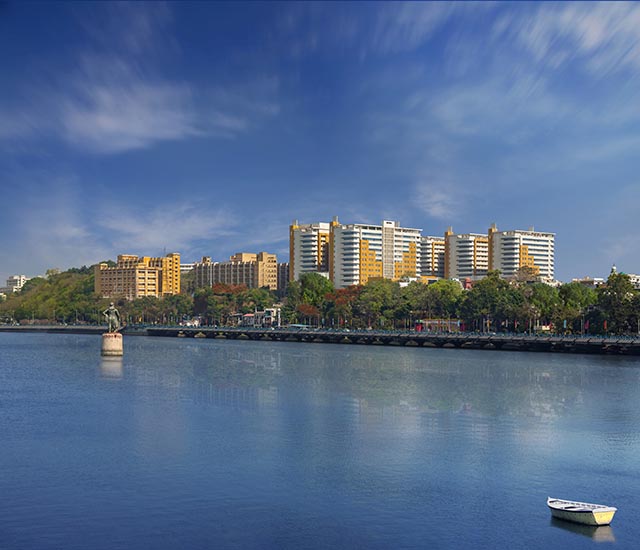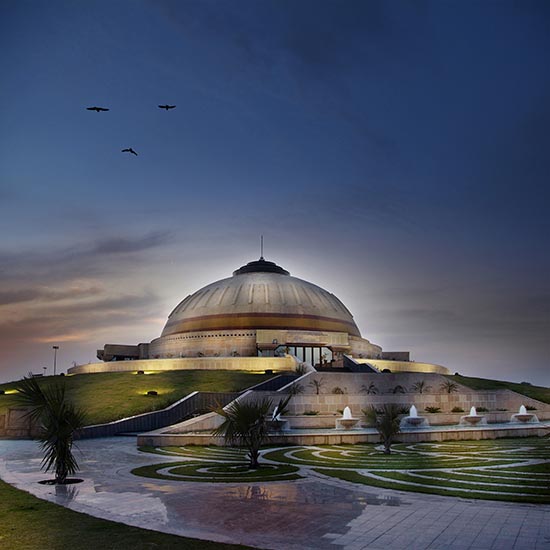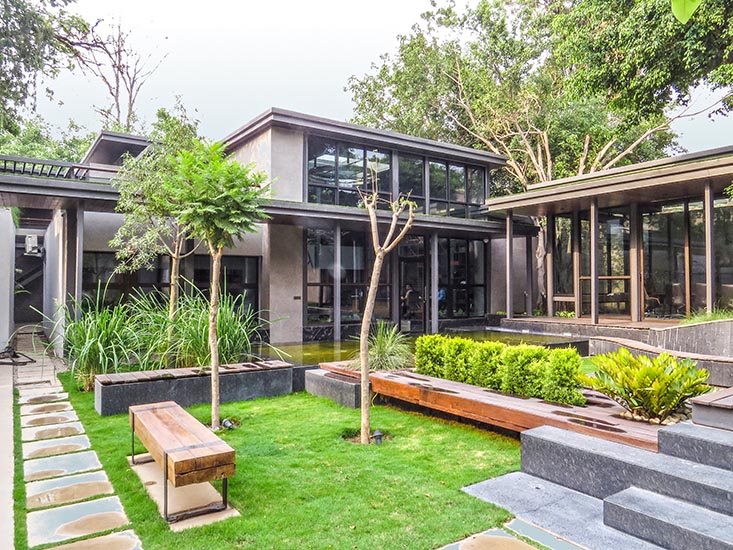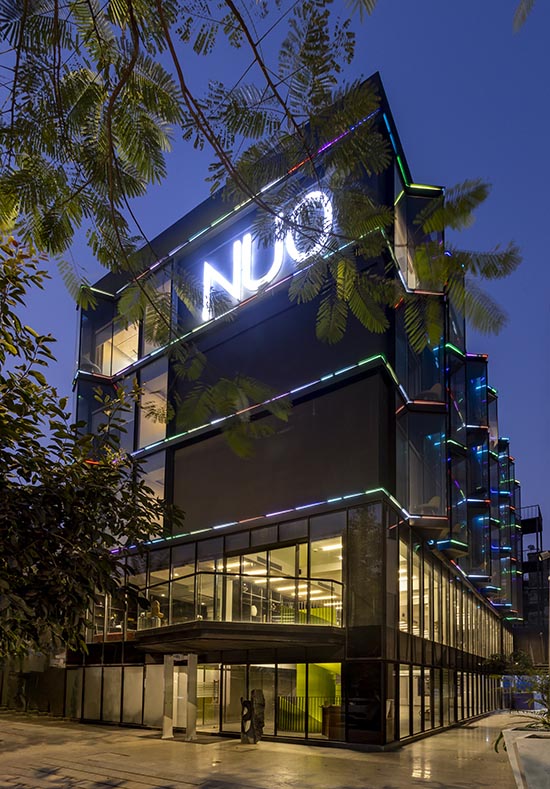
Project Name: Hamidia Hospital
Location: Bhopal, India
Typology: Healthcare
Architectural Firm: CP Kukreja Architects
Principal Architect: Dikshu C Kukreja Design Team: Dikshu C Kukreja, Sant Saran Client’s Name: PWD Bhopal
Project Year: July, 2020
Total Area: 38 Acres Built-UP Area: 151,768 square meters
Image Courtesy: Kapil Kamra

Bhopal’s Hamidia Hospital is one of the oldest hospitals in the country, dating back to the 18th-century Fatehgarh Fort premises, located on the banks of the Grand Lake.

Over the centuries, the complex has expanded to accommodate the changing, multidisciplinary healthcare needs of the ever growing city.

Today, the layers of history — from the ASI-protected Mughal and British-era heritage buildings to the post-independence medical college — present as a palimpsest located at the heart of the city.

When CP Kukreja Architects took on the redevelopment project, many of these historical structures were found in a deplorable state with respect to basic services and living conditions. The adopted design approach attempts to bind the entire complex through a definite grammar, using development as a tool for conservation.

The primary challenge in this approach was to curate a development model that prolongs the useful life of the otherwise nearly obsolete complex without greatly altering its cultural fabric.

As the country’s healthcare sector seeks avenues for smart development in medical facilities, healthcare architecture is being reimagined to not only take care of the ailing but also contribute to the collective healthcare of the citizens. The Hamidia Hospital Complex has been redeveloped into a world-class health centre through improved facilities, better education on health matters and enhanced access to regular healthcare services.

The redevelopment of the Hamidia Hospital Complex envisages the emergence of a “Smart Medi-City” that pertains to the global standards of contemporary hospital designs while retaining its old cultural legacy through a fusion between the old and the new.

Envisioning a Smart Medi-City
Developing a Medi-City revolves around the idea of a holistic approach for addressing the entire hospital complex rather than a singular building. This strategy is realised through two means:

- Shared Infrastructure Development: Designing the Complex as an Extension of the City
The historically fortified complex no longer needs to be a walled urban element detached from the city but rather be a seamless part of it. The Grand Lake and the lakefront, which were separated from the surrounding by the fort’s imposing walls for a long time, must be brought back to the city and its people. To achieve this, the master plan opens the roads running into the complex to make the lakefront a large continuous public space, thereby creating a public space network as a major structuring element for the new master plan of the Fort Complex.

- Encouraging the Development of a “City-Within-A-City”
The Hamidia Medi-City contains its own functional districts, public spaces, and a hierarchy of streets that encourage an environment-friendly living through:

- An extensive layout of pedestrian and cycle routes that encourage walking and cycling above vehicular commutes.
- Maximised provision of greenery and open spaces to encourage the natural landscape to become an integral part of the public realm.
- Reduction of pollution in the environment through extensive plantation, which helps the absorption of pollutants to a large extent, thereby keeping the air fresh and the local climate under control.
- Blurring boundaries between the interior and exterior spaces and creating recreational spaces at different levels to encourage outdoor activities.
- Encouraging nature as a healing element within the urban landscape.

Redefining Medical Infrastructure as Quintessential Building Blocks of a Healthy City
The Hamidia Hospital Complex is imagined as more than an urban infrastructure that serves the ailing. It is designed as an urban unit that also exemplifies healthy living conditions within the city. Such design measures include:

- Compact Development, i.e. keeping the building footprint as low as possible, leaving the maximum ground as a soft landscape.
- Incorporating passive design to minimise air-conditioning and other artificial mechanical controls, which often cause ‘sick-building syndrome.’
- Using non-polluting and non-hazardous building materials for construction so as to cause minimum damage to the environment.
- Formulating urban design guidelines for the complex that ensure continued maintenance of the public spaces.

Responsive Architecture: Designing the Complex as an Amalgamation of Nature and Engineered Technologies
The geographical setting of the complex plays a crucial role in defining the sustainability parameters of the Smart Medi-City. In response to the context, the design uses the existing social and environmental systems as major structuring elements on site.

This is further reinforced with engineered technologies to allow the architecture of the complex to maximise its performance. In doing so, this design celebrates the fusion between natural and man-made technologies — a much-desired binary which the future of sustainable architecture beckons.

While the heritage structures were given new life through retrofitting and adaptive reuse, both the new and old structures are infused with state-of-the-art technology to serve the coming generations. The design also seeks contemporary metaphors for the age-old architectural details so as to blend them effortlessly into the modern, smart architectural vocabulary.

The Hamidia Medi-City exists amidst an urban fabric that spans a wide time frame, with various social characteristics and cultural ethos defining the complex’s morphology and its transformations.

With the latest developments and rethinking of the historical structures, Hamidia is a magnet serving not just Bhopal’s population but also the surrounding towns and villages.

The project hereby throws light on one of the most difficult concerns in the contemporary urbanisation of Indian cities, which deals with incorporating modern infrastructure in a timeless urban landscape composed of multiple layers of culture.
About CP Kukreja Architects
Started in 1969 with a vision to redefine architecture and planning in India, CPKA is one of the most revered architectural firms in the country. A multidisciplinary Architectural firm based in New Delhi, India, we have a portfolio of 1000+ projects, 200 + employees and have worked with clients from more than 30 countries in last 50 years of practice. Our firm is ranked amongst the Top 100 architecture firms in the world and Top 5 in Asia
Our integrated practice undertakes consultancy in Master Planning, Architecture Urban Design, Structural and Civil Engineering, Electrical, Plumbing and Sanitary Engineering, Air-conditioning and FDV System, Fire Fighting System, Quantity Surveying and Estimating, and Project Management. Our unique multi-disciplinary approach is the reason for creation of some of the most iconic buildings across the globe in addition to our commitment to design excellence by imbibing innovation and sustainability in our works. Our firm, from the very beginning has ensured the inclusion of vernacular and sustainable architecture and associated design practices in our projects. Our multi-faceted family includes some of the best industrial architects, housing architects, institutional architects, structural engineers etc.



